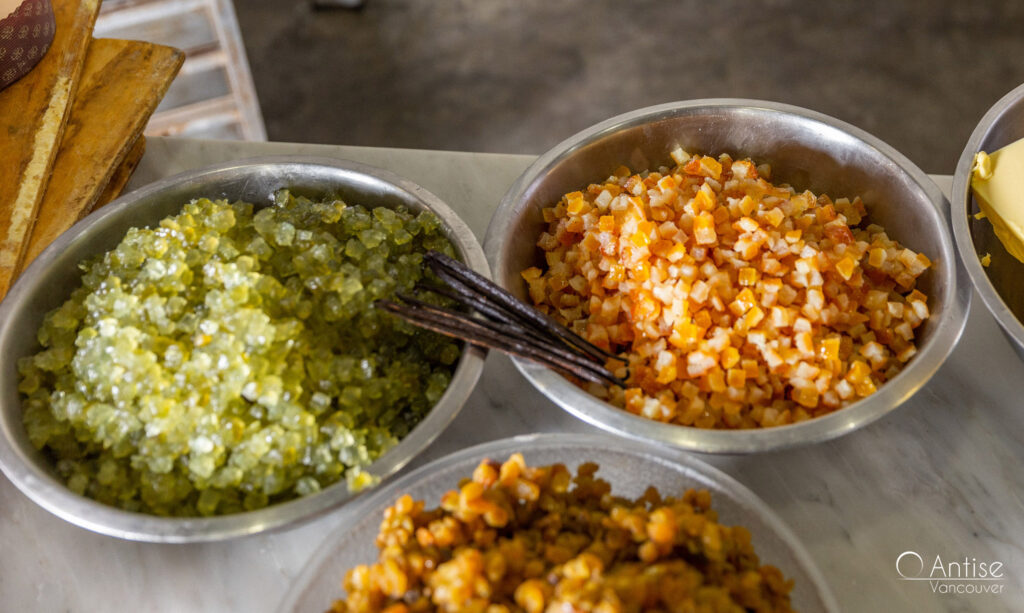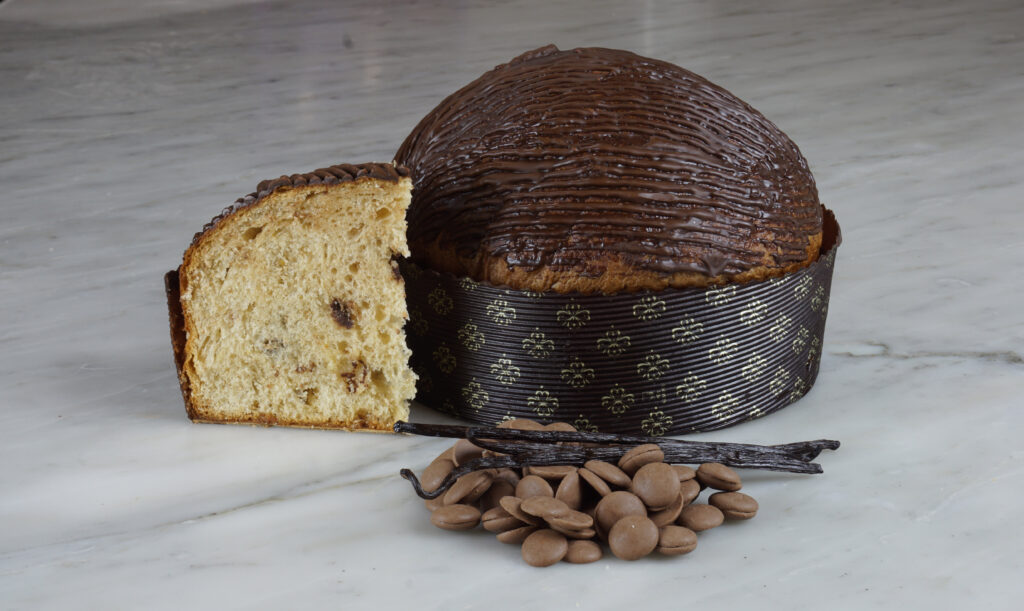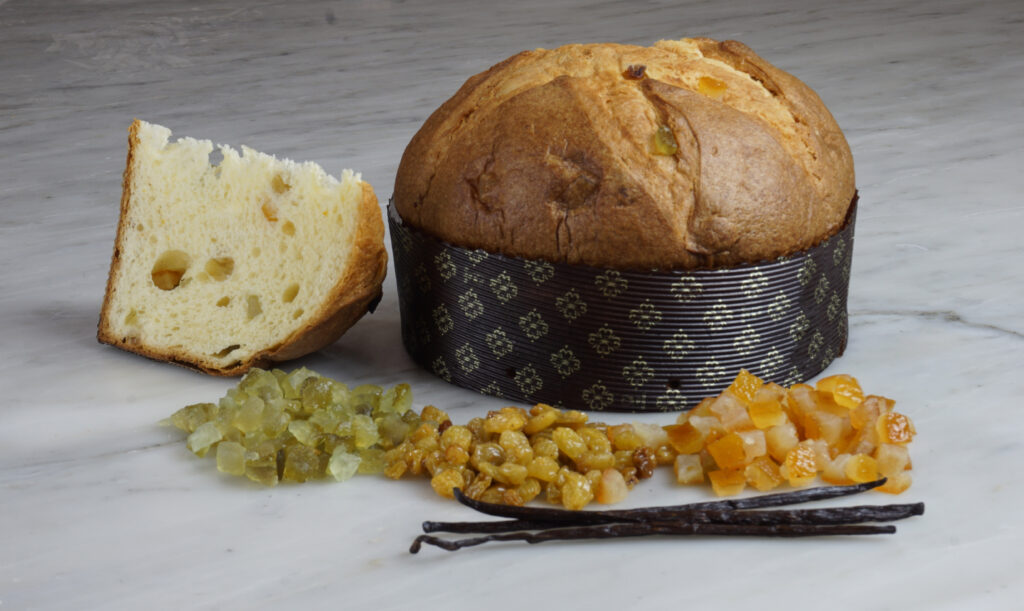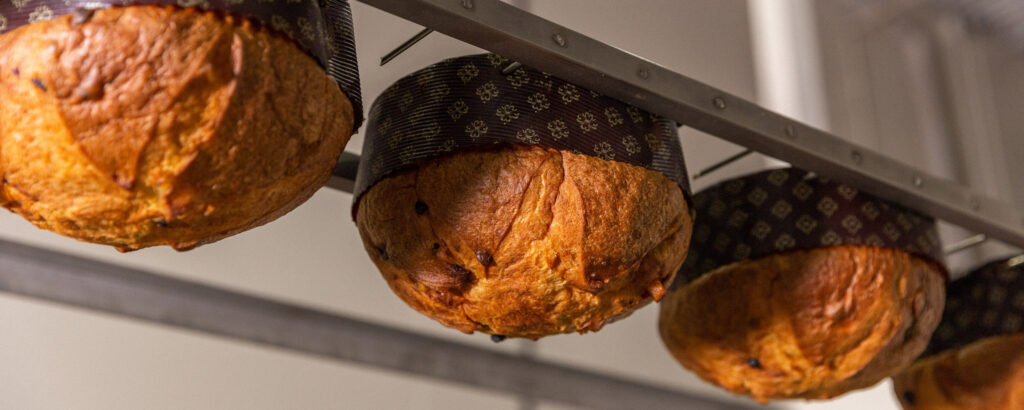Candied fruit, or “canditi” in Italian, is a typical component of a classic Panettone alongside raisins. It is a reminder of the holidays, and can be enjoyed by both adults and children alike. This enjoyment, however, it is also quite divisive, and is a line drawn with no consideration for age, exposure, or any other demographic attribute. You like it or you don’t, and nobody can tell you which until you try it yourself. To further exasperate this situation, each production of candied fruit tastes different, so even if you don’t like one type of candied fruit, you may like another, even if it is the same fruit. This is often the reason why at the Christmas table in Italy you will also see non-classic panettoni and pandoro options, where this ingredient is noticeably absent, so that there is something for everyone. For those who enjoy the flavor of candied fruit it is a blissful addition.

Typical candied fruit is made of orange and citrus varieties such as cedro. The candying process is an ancient one, allowing for the preservation of food far beyond its maturation period. Since the main cause of perishability in fruit is its high water content, this process helps extend its shelf life while retaining vitamins, minerals, color, and flavor. The candying process involves osmotic dehydration, where the water content of the fruit is removed and replaced with sugar. Without getting into too much detail, it is important to mention that the specifics of the process differ between industrial and artisanal candied fruit. In the artisanal production, there is the strict rule of no dyes, unnatural flavoring, or preservatives. In addition, the final cubes are larger with a more intense flavor. The traditional process is of simple complexity, where few steps controlled very stringently help determine the quality. The fruit is initially cut into quarters and then covered in a sugar-based syrup. It is then heated to extract the water content and left to rest. This process is repeated several times over many days with much care until the desired result is achieved. When the candying process is complete, the final pieces are then cut into cubes. Each chef may also have secrets to their recipe besides the procedural details, such as hints of lemon or the use of honeys.

Antise Vancouver currently sources its candied fruit (orange and cedro) directly from Italian producers to ensure that the product is of top quality (fresh quality local fruit) and of strictly controlled production, specifically without additives or preservatives. Cedro, for example, is a typical citrus of the Calabria region of Italy, and is not found in Canada. We have been experimenting with new flavors as well, and going forward are testing our own production using local provincial fruit to give some local variation to the traditionally Italian panettone. We hope in the future to incorporate the use of cranberries, apricots, peaches, and pears.
In the meanwhile, we welcome you to try our Classic Panettone if you already love candied fruit, or just want to give it a go and find out. Otherwise, we have chocolate and limoncello flavors, absent the candied fruit, and equally delicious.
If you have any questions, please feel free to contact us at [email protected]
We wish you a wonderful day 🙂
Antise Vancouver





